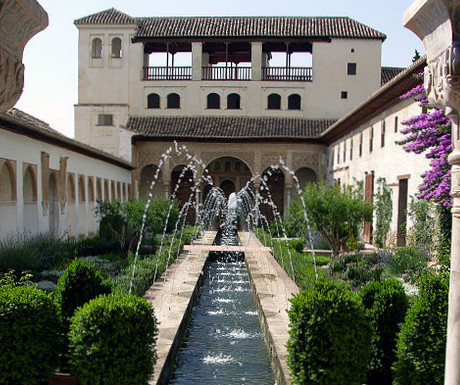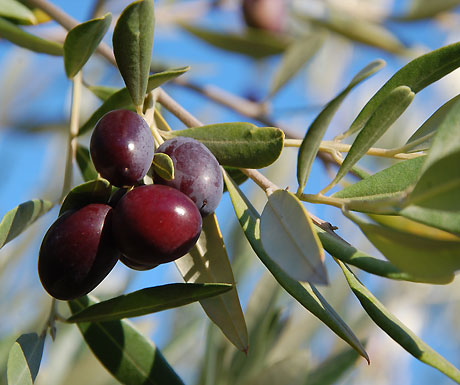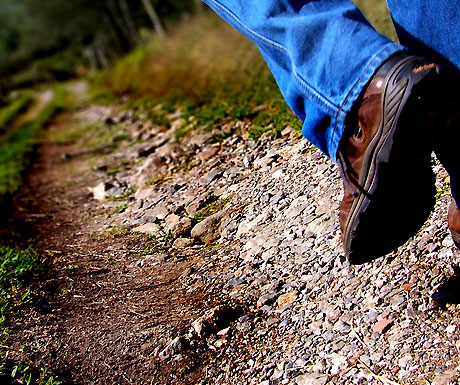While most visitors to Andalucia will be sure to include a visit to one of the popular historic sites such as the Alhambra in Granada, the Mezquita in Cordoba or the Cathedral of Seville, countless experiences await the traveler who looks just a little further beneath the surface of this beautiful and culturally rich region of Spain. With a bit of guidance and local insight it’s possible to discover some unique and unforgettable journeys; for those who think they’ve “been there, done that”, there might be some surprises in store.
Autumn is a perfect time for these explorations as the summer crowds and heat will have subsided. Here is a round up of some of the top Autumn experiences to be enjoyed in Andalucia:
Garden tour
One of the legacies of the Moors in Spain is the Moorish garden, characterised by closed patios, central water motifs with ponds and fountains, and decorative paving. There are many excellently preserved examples of original Moorish designed gardens from the 8th – 15th centuries, the prime illustration being the Generalife gardens in Granada.

Later, many of these gardens were expanded to include vast open areas though still retaining the characteristic features of channelled water and ponds, precision trimming and exotic Mediterranean plants and trees. The gardens of the Palace of Sevilla and the Palace of the Christian Kings in Cordoba are stunning examples.
For an even more modern and internationally inspired garden, La Concepcion botanical garden in Malaga is a must see. What began more than 150 years ago as a private endeavour to amass an unrivalled collection of plants and trees from around the world is now a well organised and magnificent botanical garden spread over 49 hectares on the outskirts of the city and has only been open to the public for the past 20 years of its existence.
The olive harvest
Andalucia is the world’s largest producer of olive oil and a recent ranking placed 29 Andalucian olive oils in the top 50 of the world. The olive harvest generally lasts anywhere from late October through January and it is possible to partake in this ancient tradition. The Spanish are only too proud of their olives and the fine oil they produce so joining the harvest, witnessing the first pressing at a local mill and sitting in on a tasting of the local varieties is not difficult if you have a local host. Some mills even still use the centuries old conical shaped milling stones to press the olives; most now use hydraulic presses, but even these are usually antique in the smaller mills, which is most of them!

Flamenco workshops
The traditional heart of Flamenco lies along the line between Sevilla, Jerez and Cadiz, though all of Andalucia has developed a tradition of its own. As Flamenco has grown in popularity over the past decades far too many tourist trap bars and performances have become a regular attraction for unwitting visitors, and there is so much more depth of history and tradition behind the art than can be gleaned by simply viewing a single performance. Still, it is possible to not only gain access to an authentic “tablao” if you know where to look, but also to join workshops teaching the basics of “palmas” (rhythmic clapping), Flamenco posture and dance, or even Flamenco guitar making.
Hiking and nature expeditions
Many people are unaware that Andalucia has the second highest mountain range in all of Europe: the Sierra Nevada in Granada Province with a peak of almost 3500m being shadowed only by the Alps. There are three other peaks in Andalucia taller than 2000m, including in the Sierra Tejeda of Malaga Province and the Sierra Magina of Jaen Province. Eighteen percent of Andalucia is protected land, offering vast expanses of natural unspoiled beauty for hiking, trekking and adventure sports such as rock climbing and paragliding. Summer is simply too hot for exploring many of these areas and autumn provides the perfect temperate conditions before the onset of Winter.

The attractions are innumerable, but in addition to the mountainous regions, La Doana marshlands (with a UNESCO World Heritage designation) at the delta of the Gualdalquivir River on the Costa de Luz, and the Cabo de Gata marine-terrestrial nature park in Almeria are also of particular interest.
Culinary festivals
Any round up of experiential opportunities in Andalucia would be deficient without a mention of the festivals at any time of year as these fun-filled fiestas are one of the best and easiest ways to get a literal taste for the local culture. However, autumn provides such particularly tantalising harvest celebrations as the chestnut festival in Alcaucin (31st October 2013) and the Ajo Blanco festival in Almachar (7th September 2013), celebrating the cold almond and garlic soup made with freshly harvested almonds. Villanueva de Cordoba celebrates the famed Iberian ham with the “dia del jamon” on 12th October 2013, while Teba puts on a festival of artisanal cheeses on the first weekend of October. These are but a few of the autumn festivals, but chances are, wherever you may be in Andalucia, a fiesta is not far away.